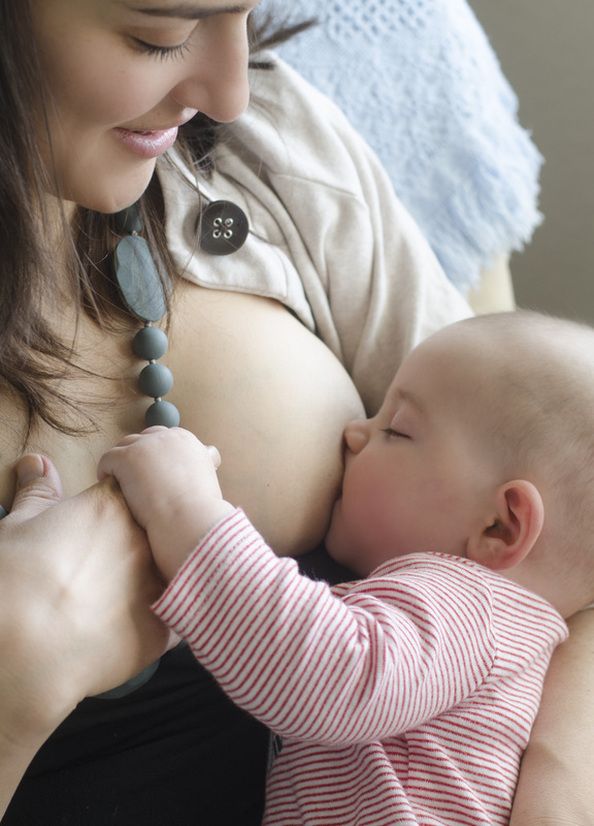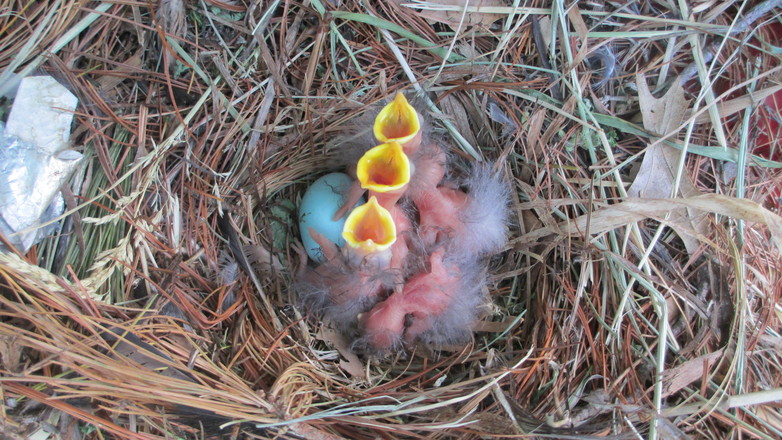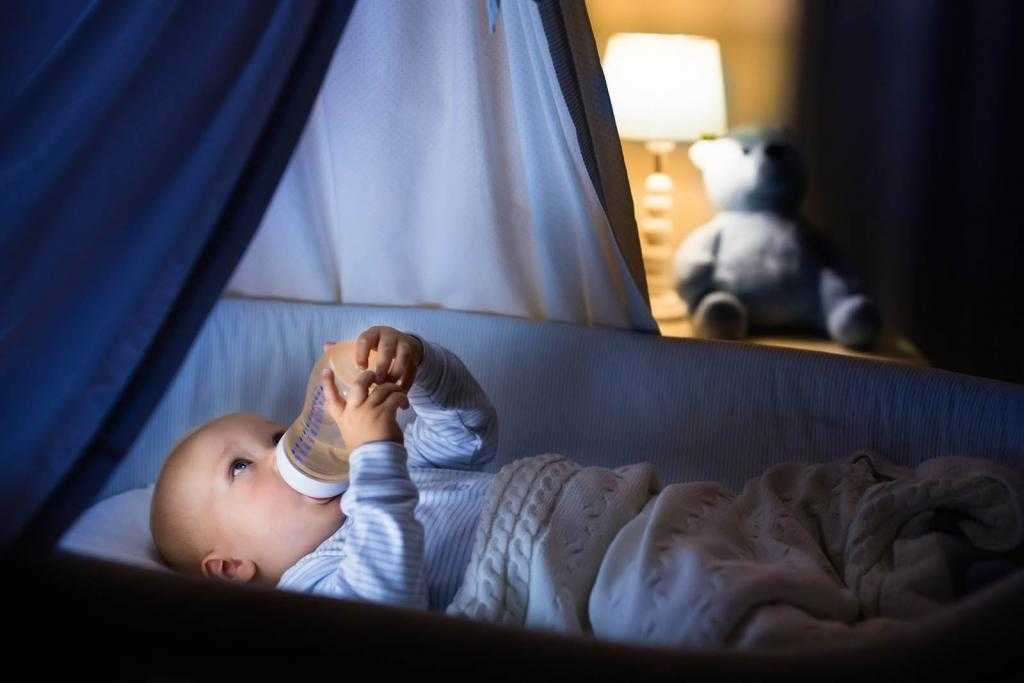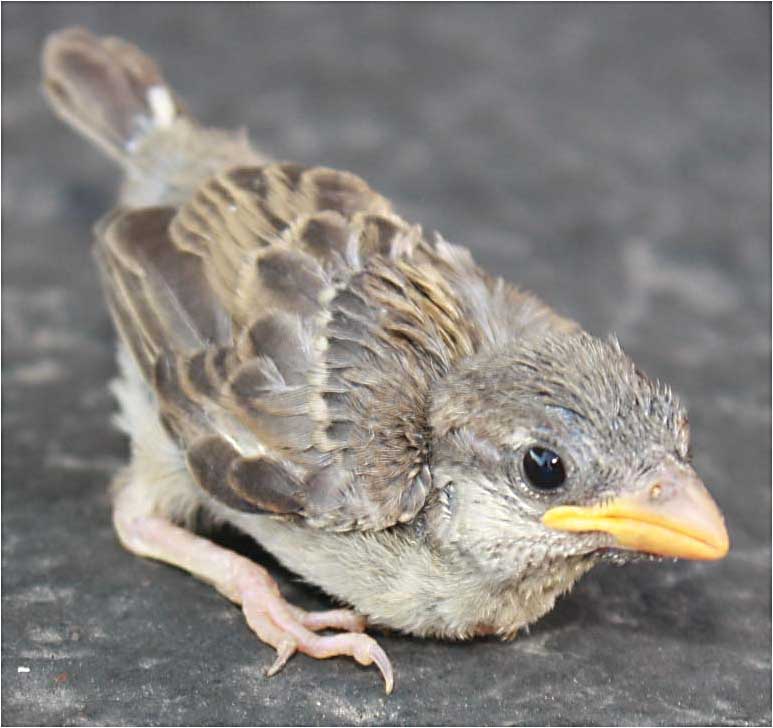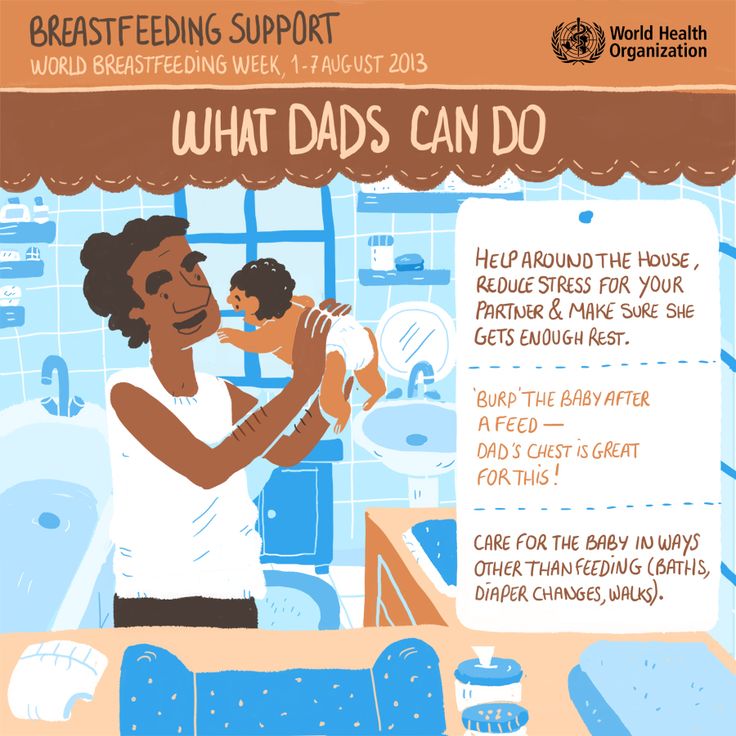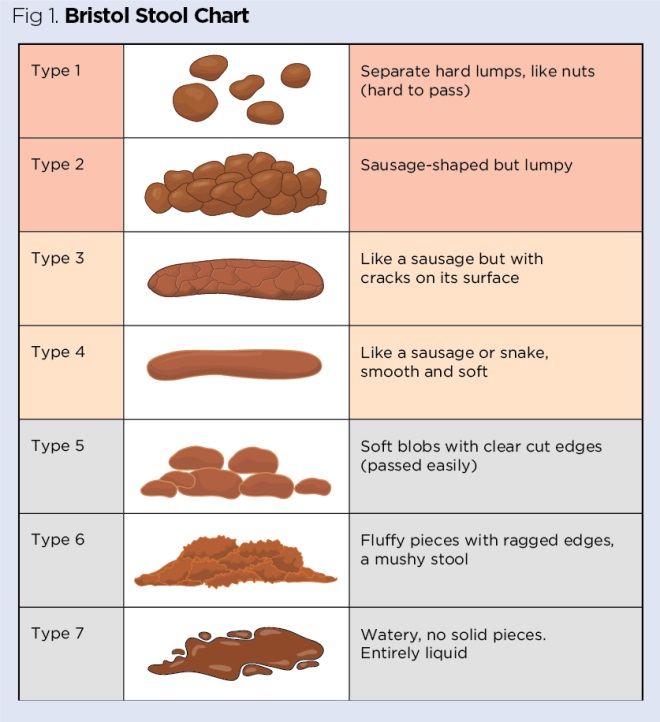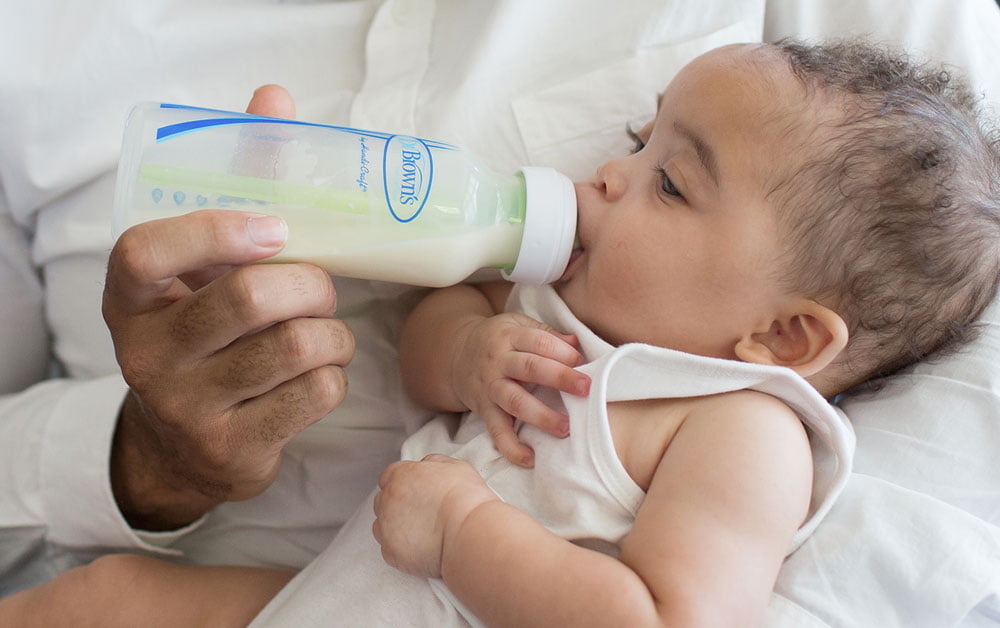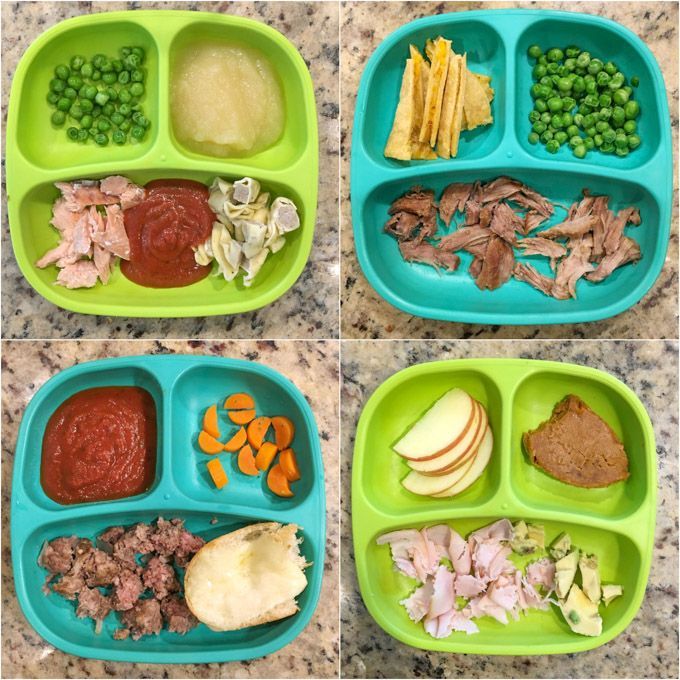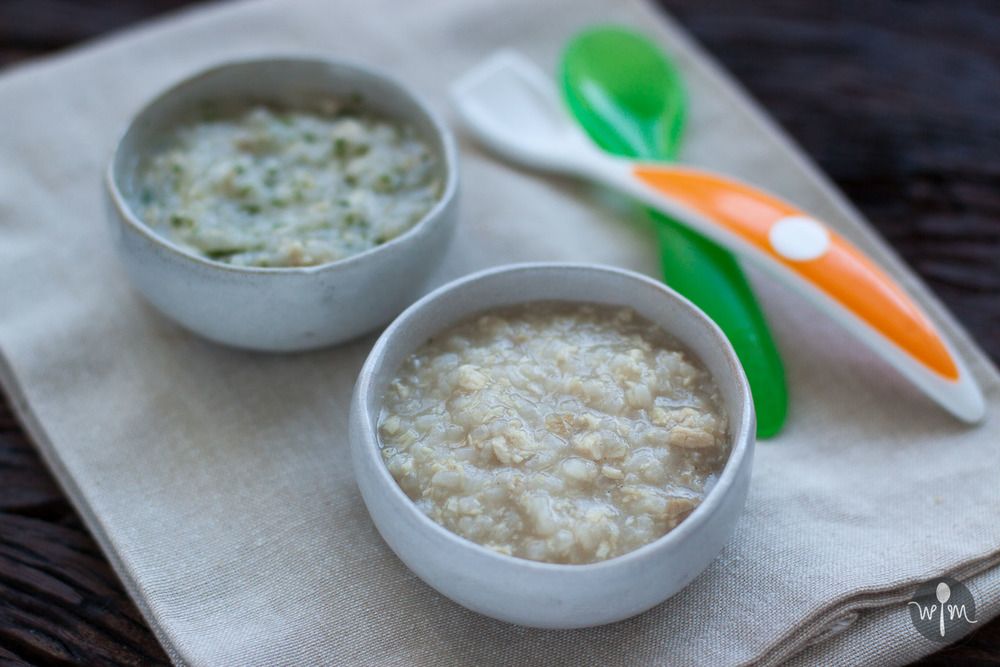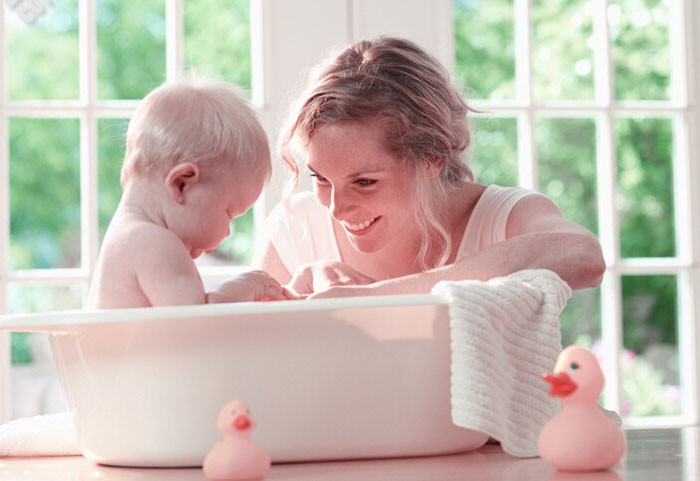Fake breast for feeding baby
Breastfeeding Dads Are Possible With This New Device
Even when partners want to divide parenting duties equally, breastfeeding can make it tricky. It’s simply not possible for fathers to take on nursing duty—but what if there was such a thing as breastfeeding dads?
At the SXSW festival in Austin, Texas, Dentsu (a tech firm from Japan) showcased its new breastfeeding system known as the Father’s Nursing Assistant
The wearable device lets dads feed babies as mom would, and promotes skin-to-skin contact between fathers and infants. One of the fake “breasts” holds the milk or formula and the other contains the nipple system, so the baby can only nurse on one side. The device doesn’t just feed the baby, it also tracks data about the baby’s nursing sessions and transmits the info to the dad’s smartphone.
According to Dentsu, the device was created with “advice from pediatricians and babysitters, who say that babies tend to touch the breast with their hands when feeding and that the softness seems to soothe them, the product has been shaped to resemble a woman’s breasts. ”
It’s not for sale yet, but it will be interesting to see if the device’s appearance at SXSW prompts more innovation in skin-to-skin systems for dads, and breastfeeding dads.
Meanwhile, a design student in the UK, Marie-Claire Springham, has invented a “chestfeeding” kit that could help fathers induce lactation and nurse their babies. The invention won the Grand Trophy prize at the Meaning Centred Design Awards 2018, and Springham hopes to make it available to consumers within five years.
The kit contains a pump and a compression vest, and it also contains hormones. Fathers-to-be would start taking progestin as soon as they learned they’re going to be a dad, and six weeks before the due date they’d start taking domperidone, which would trigger hormones to start milk production.
When baby arrives, mom and dad could take turns nursing and pumping.
During a recent television appearance on Good Morning Britain Springham explained that she designed the kit as an empathy tool.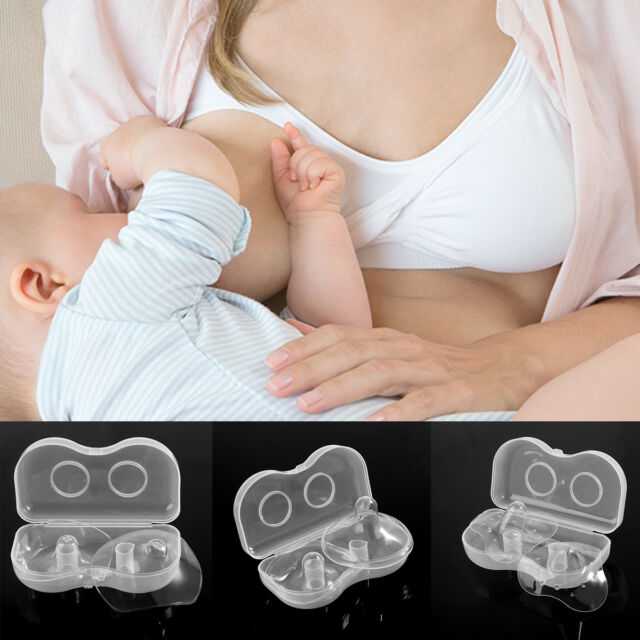 “I was looking at post-natal depression and I learnt so much, particularly that it occurs in men and the main cause of that is the feeling of being left out,” she explained.
“I was looking at post-natal depression and I learnt so much, particularly that it occurs in men and the main cause of that is the feeling of being left out,” she explained.
“I read a lot of heartfelt accounts, the dad comes home all ready to be Super Dad and the baby’s not interested because the baby’s attracted to the smell of breast milk and that’s what mum smells like,” she continued.
Springham has received plenty of backlash regarding her invention, with media personalities including Piers Morgan (who is also pretty famously against dads wearing Baby Bjorns) ridiculing it.
View this post on Instagram
A post shared by Ginger Design Studio (@ginger_designstudio)
But Julie Jenson Bennett, the CEO of Precipice Design and jury chair of the Meaning Centred Design Awards was impressed by Springham’s kit, and sees potential. “It challenges the fundamental meanings of male and female, father and mother, parent and child. At a time when we increasingly use hormones, medication and technology to change the life options available to us, Marie-Claire’s design concept goes right to heart of our taboos,” says Bennett.
“It challenges the fundamental meanings of male and female, father and mother, parent and child. At a time when we increasingly use hormones, medication and technology to change the life options available to us, Marie-Claire’s design concept goes right to heart of our taboos,” says Bennett.
The idea of fathers taking hormones to stimulate milk production may be new, but the benefits of breastfeeding dads feeding and connecting with their babies through skin-to-skin contact isn’t.
Dads have been hacking their own chestfeeding kits using bottles (so without the hormones) for a long time, and some dads have even been able to “nurse” their babies using supplemental feeding systems (basically a tube and suction cup attached to the nipple).
Springham estimates it will take about five years before her kit could be in the hands of consumers, but it could be a game-changer for families struggling with infant feeding.
It’s not going to appeal to all dads, but it would be cool for them to have the choice if they wanted to try it.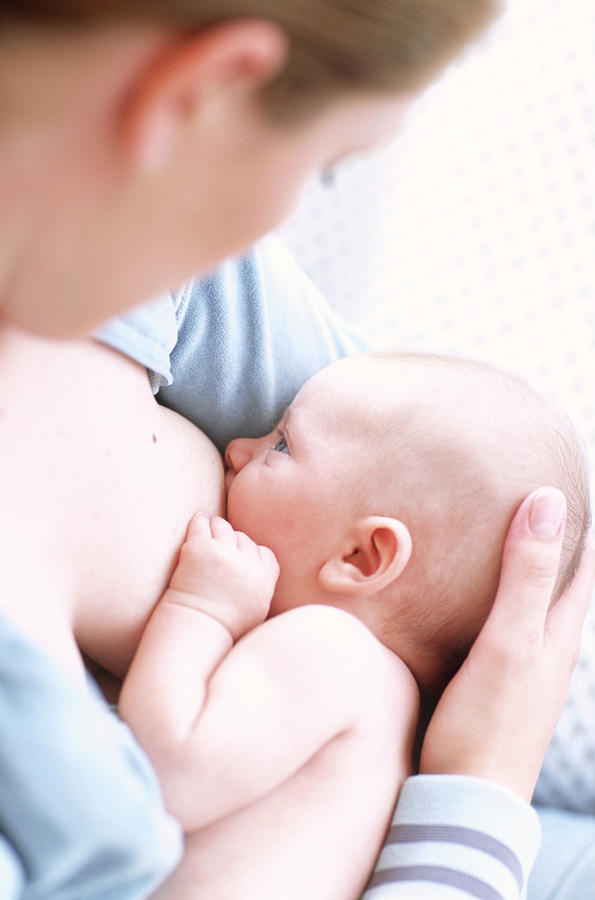
In the meantime, fathers can help out their breastfeeding partners by supporting them. Just sitting with them, getting them a glass of water, or doing the laundry that she can’t do because she’s nursing are all forms of support.
Researchers note that “paternal emotional, practical and physical supports [have been] identified as important factors to promote successful breastfeeding and to enrich the experience for the mother and subsequently the father.”
Registered Midwife CJ Blennerhassett previously told Motherly that while couples often imagine sharing the baby duties equally, in reality the nursing parent will be doing the majority of work involved in the feeding. “Partners and members can find other ways to support that workload,” Blennerhasset says. “That’s okay.”
[A version of this post was originally published February 27, 2019. It has been updated.]
You might also like:
- Dad goes viral for ‘breastfeeding’ while mama recovered from C-section
- The Rock proves how dads can support a breastfeeding mama
- This dad’s bottle-feeding hack is genius—and hilarious
Dad Boob is Coming! Device Lets Dads Breastfeed So Mums Can SLEEP
3121
SHARES
Genius! And it’s about to become a reality.
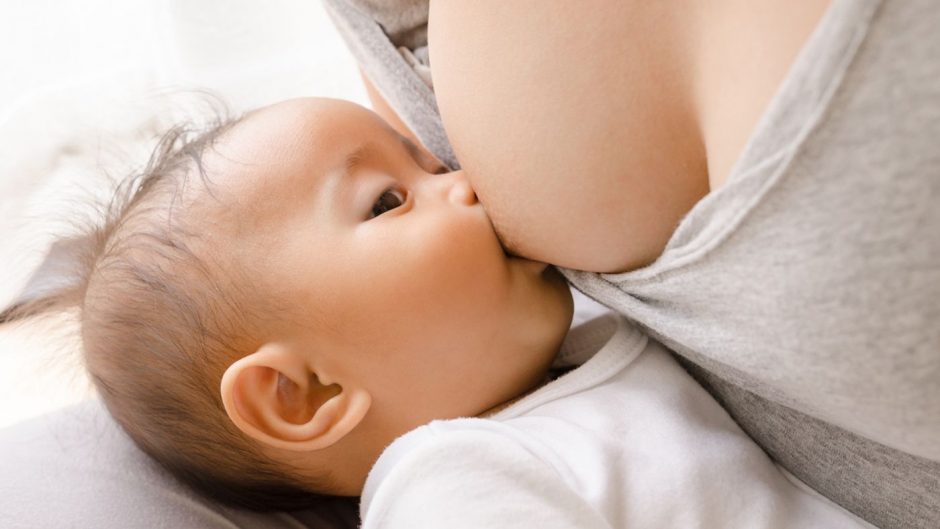 Thanks to this weird but udderly (get it?) wonderful ‘boob bra’, dads can now breastfeed baby too.
Thanks to this weird but udderly (get it?) wonderful ‘boob bra’, dads can now breastfeed baby too.Sounds super bizarre, right? Don’t get me wrong – it is. But it could also be a game changer, especially for mums with babies who won’t take a bottle. Or for men who like the idea of having breasts…
Weird, wearable boob that lets dads feed baby
Let me paint a little picture for you. It’s 3am. The boobs are out. The baby is latched. And your hubby is peacefully snoozing beside you.
Although it’s hard NOT to throw a pillow at his snoring, peaceful face, you don’t. Because, you don’t want to wake the infant. AND, because you know that night duties tend to fall on you – the one with the boobs – not your husband. So, night after night, you sleep in 35-minute increments while baby sucks and hubby snores. And slowly lose your mind.
But with this weird and kinda wonderful gadget, you can actually take a break from the late night feedings or leave the house and let dad take over breastfeeding duties.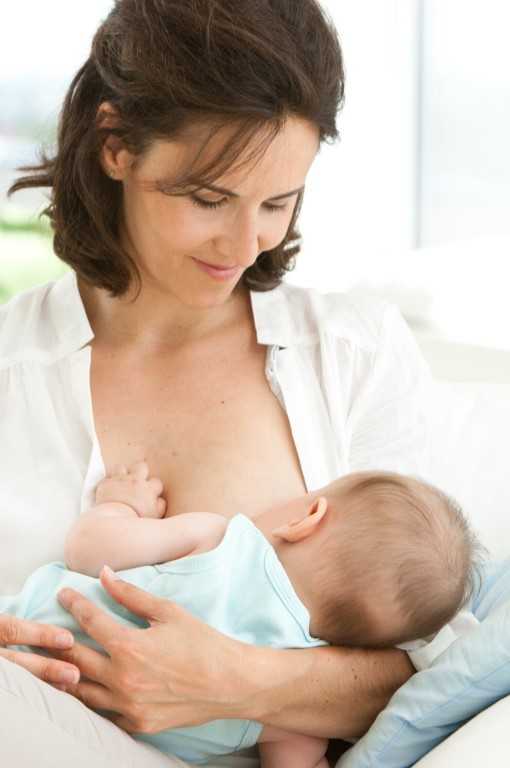 Quite literally.
Quite literally.
Meet the Dad Boob
It’s all thanks to Japanese Company, Dentsu, which showcased their prototype at the SXSW festival in Austin, Texas earlier this year.
The technical name of this bad boy is the “Father’s Nursing Assistant” but we reckon “Dad Boob” has a much better ring to it, especially at 2am when the baby is crying.
Simply roll over, nudge your partner and whisper, “Get the Dad Boob out, honey, it’s your turn.”
Ahhh. Bliss.
How it works
Remember that homemade boob that Jack wore in Meet the Fockers? Well, the Dad Boob is kind of like that. But it’s far more techy. And it was made under the guidance of paediatricians.
The theory behind the device is simple. Babies love breasts. They love the shape, the feel, the skin-to-skin. They love to grab at them while feeding, to claw at them with their crazy long fingernails and to bite down on the nipple whenever they feel like it. And, as they get older, they love to whip their head around while still holding onto the nipple, ruining mum’s nipples forever and causing her to grimmace in pain.
Well, the Dad Boob lets babies do all of these things but to a fake breast, not yours. One of the fake boobies holds the breastmilk (or formula) and the other contains the nipple system. The device is soft and shaped like a real breast and is designed to promote skin-to-skin contact for fathers. Freakin genius!
Baby hates the bottle? Bring out the Dad Boob instead
For babies who refuse to take a bottle, this could be a game changer. It means others can take a turn at feeding bubba without having to go through the stress of getting them to latch onto a bottle.
Many babies will flat out refuse to take a bottle, meaning mums are left doing ALL the feeds, even when there’s a whole freezer full of expressed milk.
Trackable, vibrating boobs the way of the future?
What makes the Dad Boob even more unique is its super technical powers. Because the Dad Boob is also a Smart Boob that tracks data about baby’s feeding session and transfers the info to a smartphone. Plus, it vibrates to help lull baby to sleep.
Plus, it vibrates to help lull baby to sleep.
Although not for sale yet, we are curious to see just how well this goes with the public. Would you be willing to strap a boob to your husband for the sake of some sleep? I’m going to go with Yes.
Looking for more strange products out there? Check out WTF is THAT? 11 Crazy Baby Products That Actually Exist.
3121
SHARES
Can I breastfeed with implants
Can I breastfeed with implants6022 Published: 11/13/2020
Breast milk provides the child with good nutrition and all the useful substances and trace elements necessary for the body, increases its immunity and promotes development. But breastfeeding is also a way of communication, it helps to establish a strong bond between mother and baby, to express their love and tenderness.
Taking care of the baby, many mothers who have enlarged their breasts with the help of implants refuse breastfeeding, fearing to harm the baby.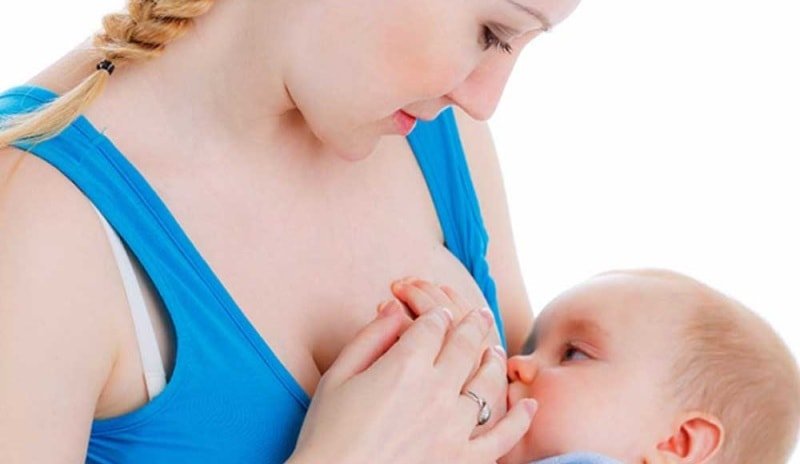 And it’s completely in vain, because the question “is it possible to breastfeed with implants” has long been resolved - it has been established for certain that lactation after mammoplasty is possible and completely safe.
And it’s completely in vain, because the question “is it possible to breastfeed with implants” has long been resolved - it has been established for certain that lactation after mammoplasty is possible and completely safe.
How implants affect breastfeeding
Long-term studies have established that the presence of breast implants in a mother does not affect the lactation process in any way and does not affect the quantity or quality of milk.
The process of breastfeeding is also no different from natural breastfeeding. It is enough for mom to follow the usual daily routine and nutrition recommended by the obstetrician when discharged from the hospital.
Modern implants are made from safe, clinically tested materials that perfectly mimic the texture and density of natural breast tissue. To the touch, they are indistinguishable from real breasts - they are just as soft and elastic.
Implants do not interfere with the movement of milk through the milk ducts and do not impede its production.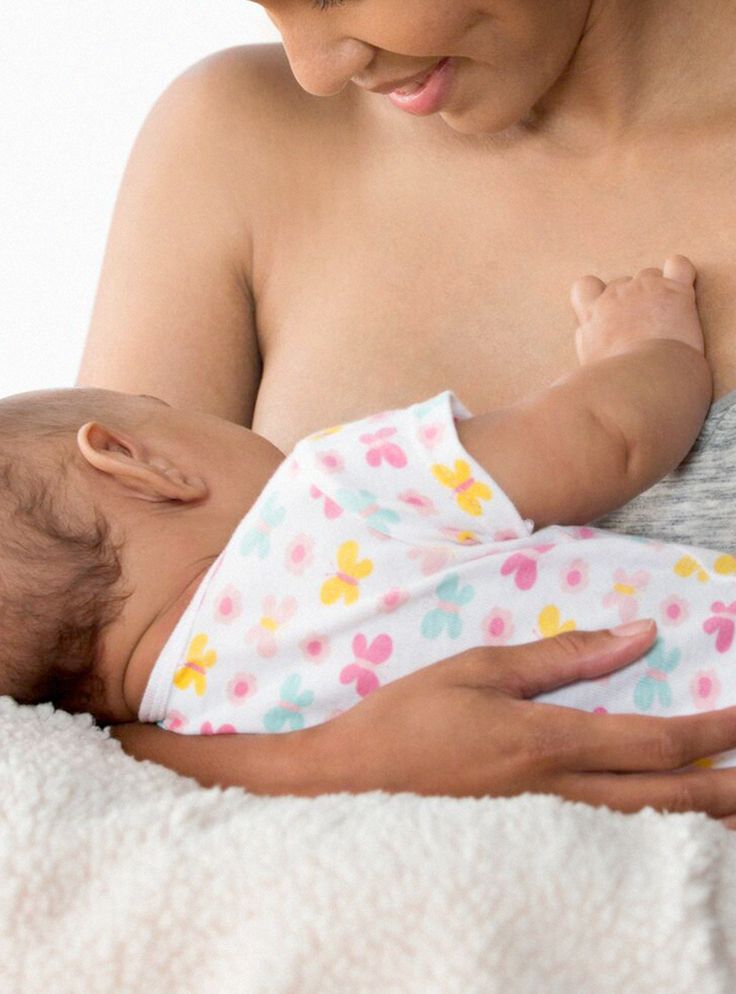 Therefore, the baby will not have to make additional efforts to eat, and the woman will not experience discomfort or pain when feeding.
Therefore, the baby will not have to make additional efforts to eat, and the woman will not experience discomfort or pain when feeding.
Is it safe to breastfeed with implants
Lactation after breast augmentation is absolutely safe for a number of reasons. Let's look at this issue in more detail using the example of Motiva breast implants:
- The endoprosthesis shell is made of a very thin but strong material that can withstand up to 20 tons of external load. It does not tear or deform, and the risk of damage is only 1%.
- Soft gel filler Progressive Gel Plus is dense and resilient, retains its shape and does not leak out in case of damage to the shell in emergency situations, but remains in place. Even if the implant breaks, its internal contents do not come into contact with the breast tissue.
- Implant Filler Gel is non-toxic, contains no potentially harmful chemical or synthetic ingredients, and does not dissolve in milk or other liquids.
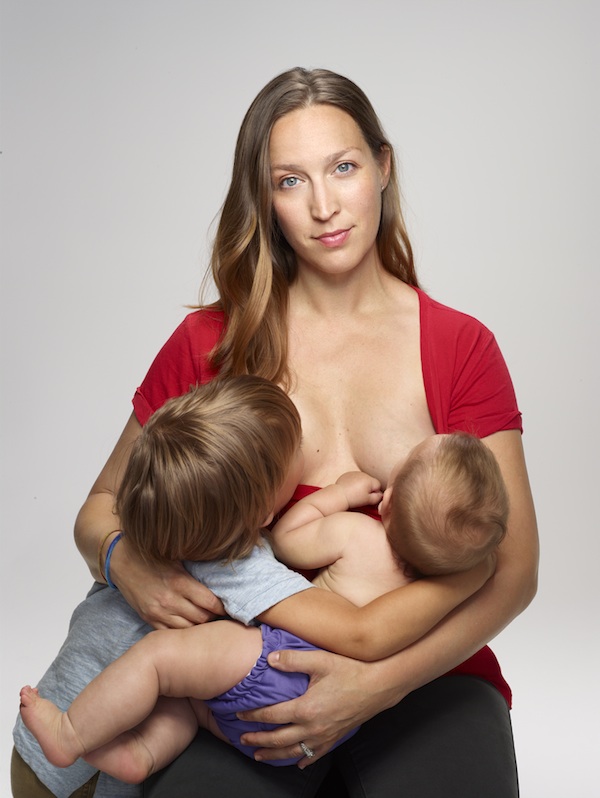 It is completely safe for both the child and the mother herself.
It is completely safe for both the child and the mother herself. - An additional protective layer of bluseal prevents the gel from seeping through the shell and entering the tissues of the body.
- For breast augmentation, implants are placed either under the mammary gland or under the pectoral muscle. Thus, they do not block the ducts of the mammary gland, do not interfere with the production or movement of milk.
The question of whether it is possible to breastfeed with implants, with the current level of technology and materials, has become irrelevant. And the lovely ladies who have made mammoplasty absolutely do not need to deny themselves anything, especially in such an important and necessary matter as feeding a child.
Recommendations for breastfeeding after breast augmentation
In principle, the presence or absence of breast implants does not affect the production of breast milk or the feeding process itself. But in order to make the happiest months in a woman's life as comfortable and carefree as possible, you should remember a few simple tips:
- It is not recommended to plan a pregnancy earlier than one year after breast augmentation.
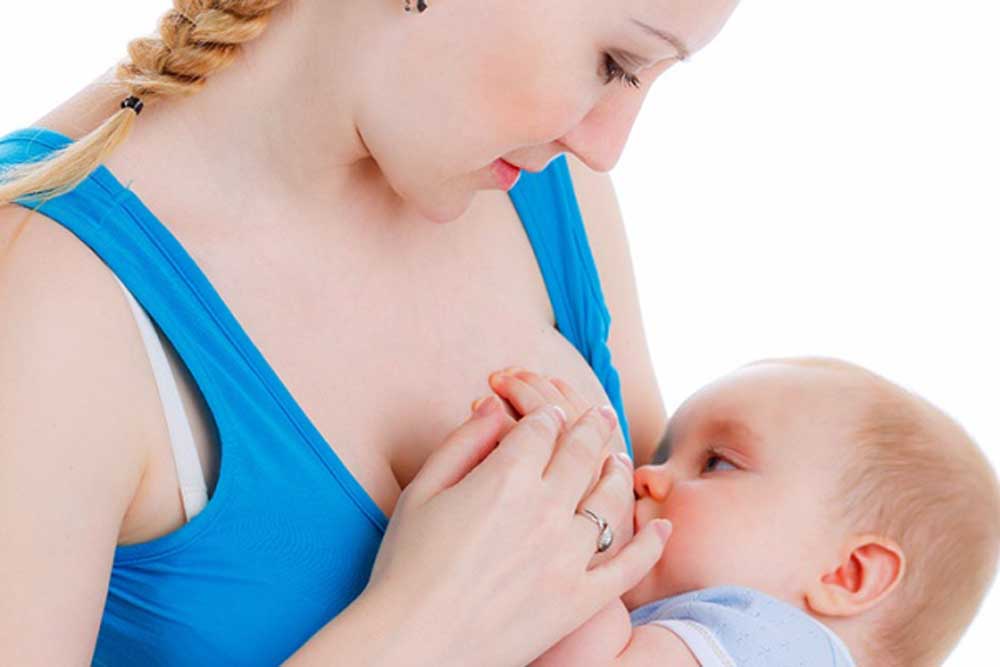 Let your body fully recover and prepare for a new pleasant test - motherhood.
Let your body fully recover and prepare for a new pleasant test - motherhood. - Before pregnancy, it is advisable to visit a specialist and be examined for complications after mammoplasty.
- Use state-of-the-art implants from trusted manufacturers. They not only guarantee complete safety for mother and baby, but also provide an excellent aesthetic result.
- Breasts should be handled very carefully after mammoplasty. During lactation, it often changes shape under the weight of milk and the implants themselves, the skin may lose firmness and elasticity, but if you are careful when feeding and take care of the mammary glands, this will not happen.
- If you suspect that the implant shell has torn, you should immediately contact a specialist. In any case, the gel will not enter the milk and the baby's body, and will not harm him, but may cause discomfort during feeding.
For the rest, it is enough to follow the usual recommendations, choose comfortable positions for feeding and properly attach the baby to the chest.
To get detailed advice on implantation and Motiva products, contact our specialists via the form on the website or by phone!
Other articles
Breast reconstruction with implants
Breast augmentation with implants with a lift
Breast augmentation: all methods of implant placement
Request a call Enter the surgeon's office
Making an appointment
Order a call
Please fill out the form.Our consultant will contact you
Your consent is required!
We take your privacy seriously. We will use the personal information provided solely to administer your account and provide products and services as requested by you. However, we would like to keep you up to date with our news and promptly notify you about new promotions, projects and products.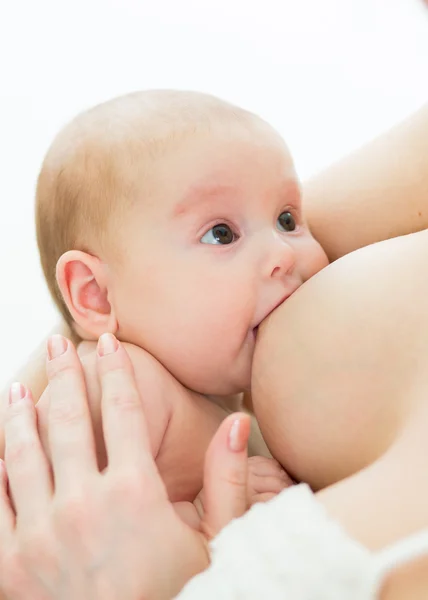 And also be able to invite you to our events.
And also be able to invite you to our events.
The information you provide will be used in accordance with the terms of our Privacy Policy. At any time, you can change your mind and unsubscribe. Please select the required option.
I consent to the processing of personal data in accordance with Law No. 152-FZ "On Personal Data"
We use cookies to provide you with the best user experience. Learn more >>Close
is it possible to refuse breastfeeding
These are comments from readers from the Community. Collected into one material, carefully edited and formatted according to editorial standards.
Julia Konyakhina
studied the opinion of readers
Author profile
According to WHO, only 40% of children under six months of age are exclusively breastfed. The rest are on artificial or mixed feeding.
We asked readers to tell us which way of feeding they have chosen for their children and why. A discussion unfolded in the comments: there were arguments both in defense of artificial mixtures and in favor of breastfeeding. We carefully studied the opinions of readers and chose arguments for switching to mixtures and against.
A discussion unfolded in the comments: there were arguments both in defense of artificial mixtures and in favor of breastfeeding. We carefully studied the opinions of readers and chose arguments for switching to mixtures and against.
👍 For: mixtures help out when mom is not around
Evgeny Kulakov
experienced father
In October 2020, when the youngest child was six months old, the wife contracted the coronavirus and was admitted to the hospital for 10 days. And the mixture saved me, if not my life, then my nervous system for sure. Although the baby was already given complementary foods, he was not yet weaned from the breast. I had to urgently order a mixture, or rather a lot of a mixture. So he got off his chest.
The eldest himself refused breast milk at six months. The doctor recommended that we switch to a mixture to avoid a lack of vitamins.
/papa-mozhet/
How can a man go on maternity leave
As for the pros and cons of formulas for children, no difference was noticed with breast milk.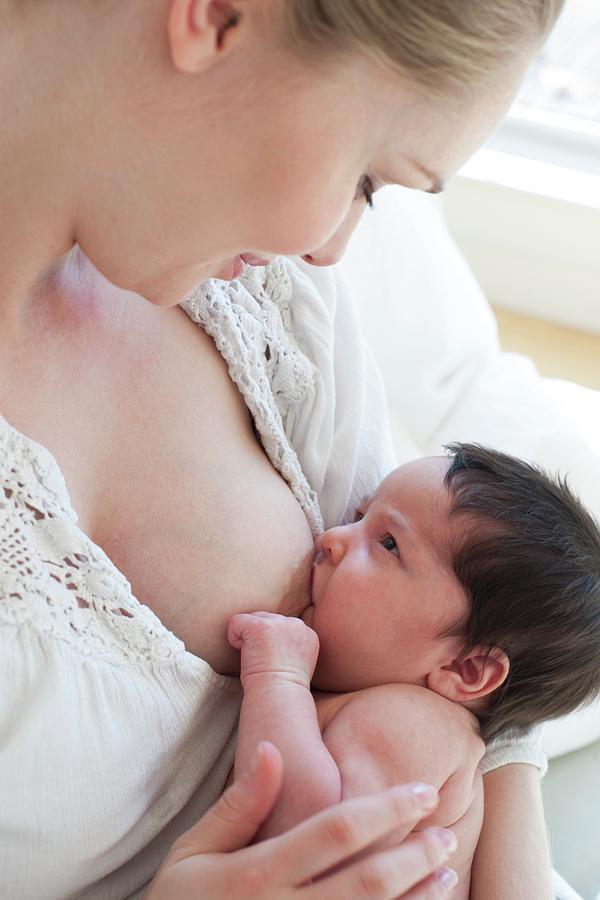 And the family benefited from not breastfeeding. Despite the restrictions during the pandemic, we became more mobile with the younger one: we were able to travel long distances and walk longer in nature.
And the family benefited from not breastfeeding. Despite the restrictions during the pandemic, we became more mobile with the younger one: we were able to travel long distances and walk longer in nature.
👎 Against: breast milk is healthier for the baby
Zhenya
fed two
She breastfed two daughters, although both times were not easy. The older one could not be properly attached to the chest. It was very painful, the milk stagnated in the ducts, the child did not gain weight well. She called breastfeeding specialists to the house: they helped, showed me how to feed properly. She fed her daughter for up to a year and seven months, then she quite easily refused to breastfeed.
I don't regret choosing to breastfeed. My daughter was a little sick, now she also easily tolerates SARS. Initially, she was anxious, and breastfeeding helped her calm down and fall asleep.
There was a lot of milk from the youngest, and I again suffered from severe lactostasis.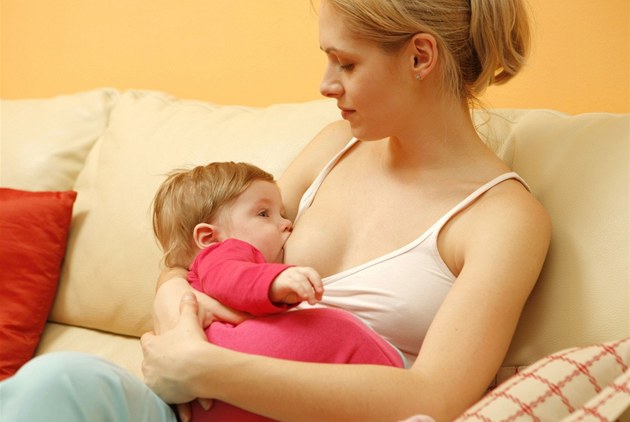 Again she called a specialist: they strained her chest, albeit through tears. But then everything was perfect, fed up to a year and a half. There was a moment when the child tried to refuse the breast, but we managed to overcome it.
Again she called a specialist: they strained her chest, albeit through tears. But then everything was perfect, fed up to a year and a half. There was a moment when the child tried to refuse the breast, but we managed to overcome it.
It seems inconvenient to me to feed with mixtures: you need to fiddle with jars, sterilize them, and heat them up. You may be allergic to the mixture. Breastfeeding is much easier: I put on a special apron and fed anywhere. I believe that mixtures are an extreme measure that can be taken only out of hopelessness.
Verunchik Gavrikova
passed the GV course
Initially, she was determined to breastfeed her baby. I read a lot, watched videos on YouTube about the best position to feed, how to properly attach the baby to the breast, what to do in case of lactostasis, mastitis, how to decant in an emergency with your hands. My friends gave me breast pumps, I bought absorbent breast pads.
I chose the GV-friendly maternity hospital, where after giving birth a consultant came to me and showed me how to apply the baby. I also took a special training course: it was not only about feeding, but also about the features of caring for children.
I also took a special training course: it was not only about feeding, but also about the features of caring for children.
I can’t say that I am a fan of breastfeeding, but I think that this is the best option for a child. Nature has provided that the composition of milk varies depending on the age and needs of the baby. Through milk, he receives antibodies. That is, if a mother gets sick with SARS, the child will be protected. After all, it's free, it's the bond between mother and child. At night, mom can sleep while the baby eats while sleeping together. As a result, everyone gets enough sleep.
/spi-moya-radost/
How to solve baby sleep problems
Evgewa
breastfed for 2 years
There was not even a choice how to feed. She knew that there would be only breastfeeding, despite the fact that the child was born prematurely and spent a total of a month on nursing, of which one week was in intensive care.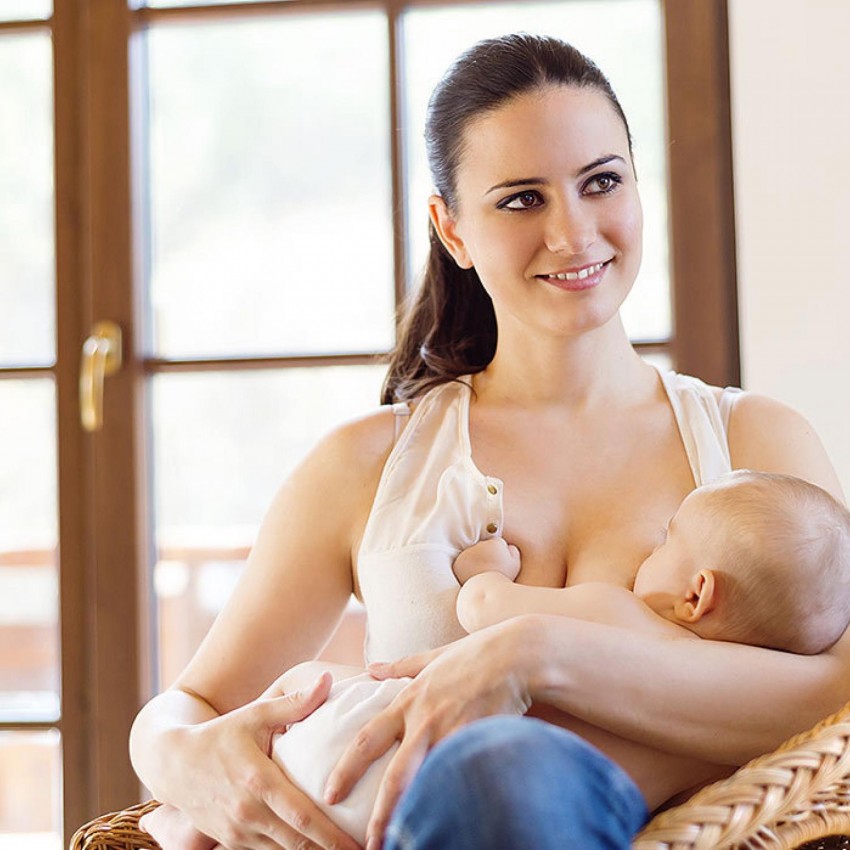
The neonatologist said that at least a drop, but you need to give breast milk to the child. For several weeks, until it was impossible to go to the ward with him, I pumped every three hours and carried the milk. She did not feed only during the resuscitation period, where the child got two weeks after birth.
After discharge, already at home, feeding was established, which lasted up to two years without a single problem. I remember this time as the happiest.
👍 For: when there is not enough milk, with a mixture the child is more satisfying, and the mother is calmer
Lera Kotova
for the child to be full
In my family, all the women had little milk. Therefore, I prepared for the fact that I would have the same. She breastfed the eldest for up to five months, squeezing some miserable drops out of herself, and at the same time supplemented her with formula. I fed the younger one for a month and a half, but then I got tired of lying for hours with a breast in my mouth and no visible effect, so I switched him to a mixture in a week, and everyone felt good and satisfying.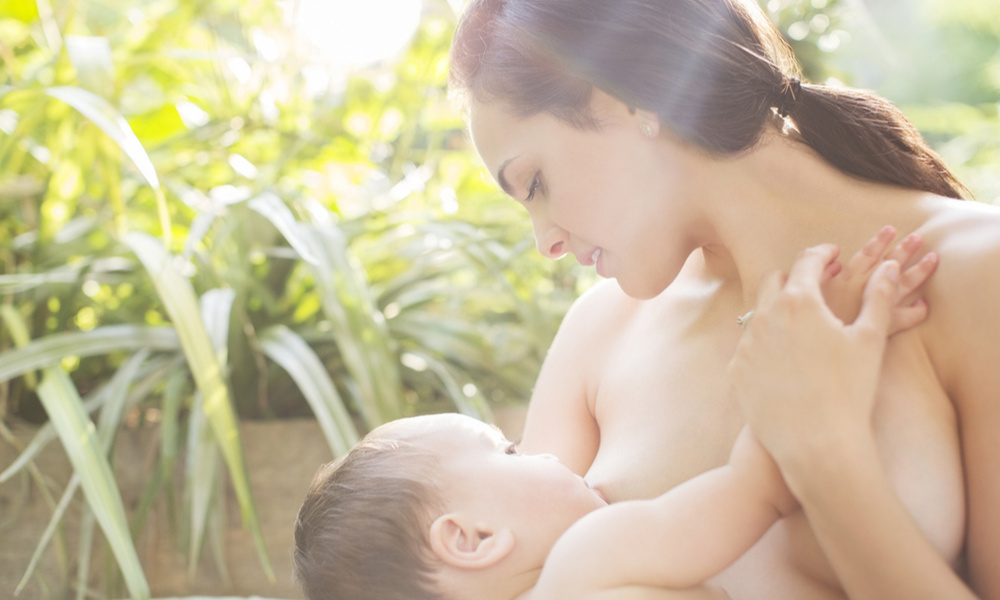
Elena Goncharova
switched to the mixture and has no regrets
I fed my son formula. It didn't work out for me with breastfeeding. I don’t know how it really is, but it felt like there wasn’t enough milk in the first week. I drank and lactation pills, and tea with milk, and ate often, but my chest quickly became empty, my son hung on it for an hour and a half and, as it seemed to me, did not eat enough.
I expressed some crumbs, got nervous, cried that I couldn't feed my son. It still hurt. Although it seemed like she tried to apply, as they taught in the maternity hospital. In the end, looking at my suffering, my sister said a very correct phrase: “Your task is to feed the child. And what is a secondary question. So we switched to a mixture. I don't regret.
We fed our son together with her husband: sometimes he, sometimes me. Walked longer, slept better. Until almost two years old, the child did not get sick with anything, constipation, and did not suffer from allergies.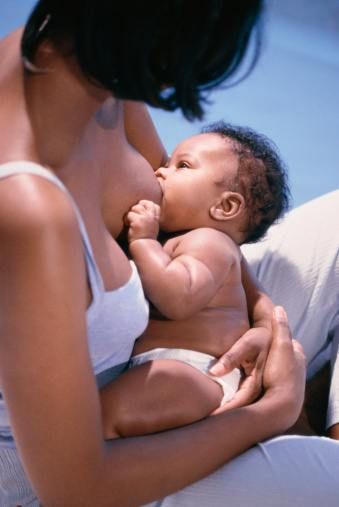 The only negative was only the price of the mixture. It turned out that a good one is not cheap.
The only negative was only the price of the mixture. It turned out that a good one is not cheap.
/baby-cost-calc/
Calculator: How much will you spend per child in the first year
Perhaps with the second child I will immediately begin to formula-feed, or maybe I will try breastfeeding again. But this will be my personal decision, I will not listen to anyone else on this issue.
👎 Cons: contact with a child is invaluable It turned out to be difficult for me to wean the children from the breast. With the first child, this happened at two years and two months, with the second - at one year and eight months.
The process of establishing feeding and feeding itself was problem-free. I did not take medicines, there were no force majeure. Contact with the baby during feeding is invaluable.
👍 Pros: formula feeding is more convenient
Polina Kalmykova
weighed all the pros and cons and chose the mixture
Both children spent the first weeks after birth in the hospital.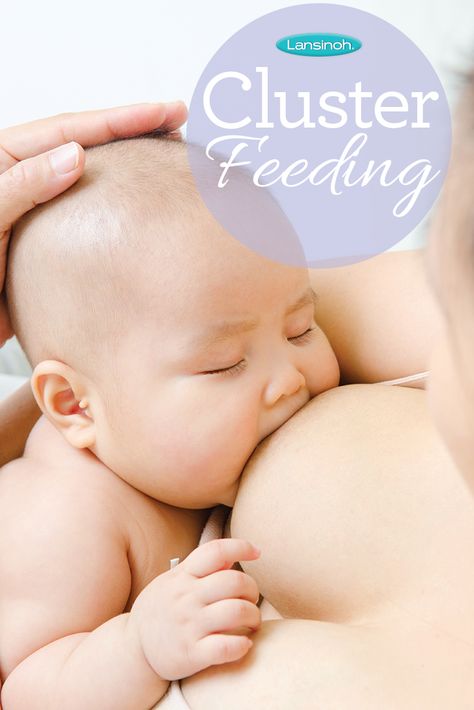 In order not to lose breastfeeding, I had to work hard: first, around the clock every three hours, go to the intensive care unit and express into the syringe, then sit in the hospital in the breast pumping room with ten more of the same mothers and prepare food. All this was bleak: they don’t even give a child in their arms, after giving birth emotions rage, and here you are sitting - either you cry, or a neighbor.
In order not to lose breastfeeding, I had to work hard: first, around the clock every three hours, go to the intensive care unit and express into the syringe, then sit in the hospital in the breast pumping room with ten more of the same mothers and prepare food. All this was bleak: they don’t even give a child in their arms, after giving birth emotions rage, and here you are sitting - either you cry, or a neighbor.
After the hospital, my son did not want to breastfeed, she still suffered with breastplates: I remember, to be honest, all this with a shudder. As a result, I breastfed him for up to a year, and my daughter refused at four months: I was forced to switch to treatment that was incompatible with breastfeeding, and after a bottle, my daughter stopped breastfeeding. Probably, it was possible to find a consultant, try to fix something, but I had no particular desire.
A month before, a gastroenterologist from a polyclinic put me on the most rigid diet literally without anything, because my daughter had reflux.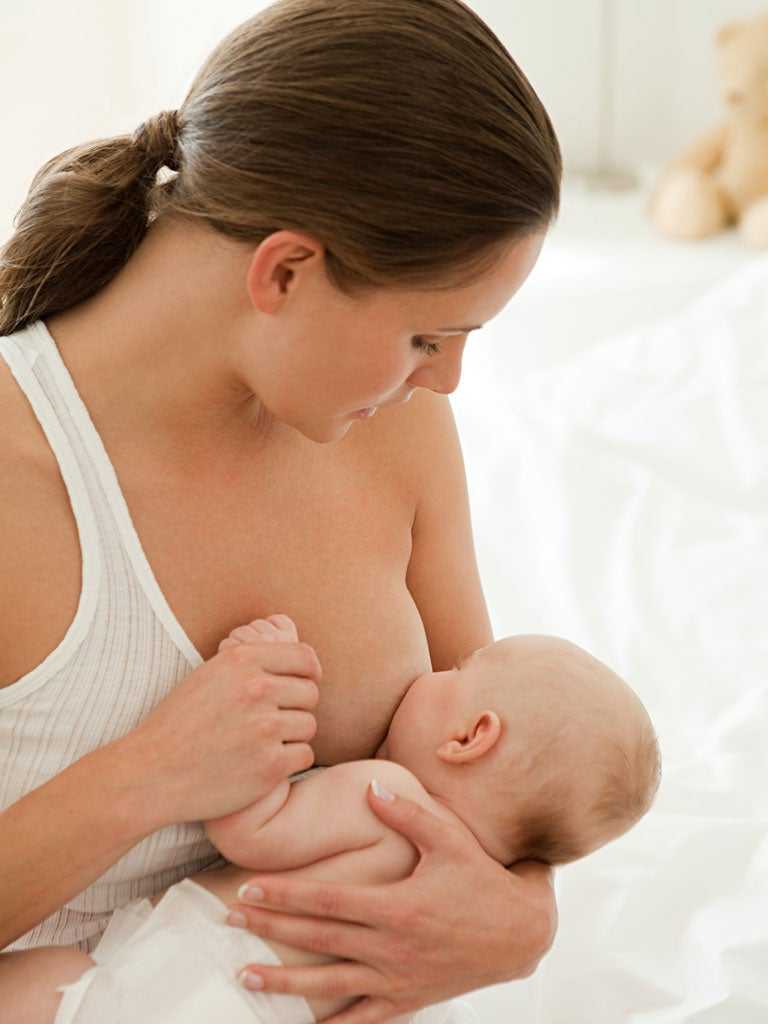 I decided it would be best for everyone to switch to a special blend. Later, however, it turned out that reflux absolutely fit into the physiological norm and there was no need to torment me like that.
I decided it would be best for everyone to switch to a special blend. Later, however, it turned out that reflux absolutely fit into the physiological norm and there was no need to torment me like that.
Community 06/22/21
How to eat properly while breastfeeding?
Now my daughter is already a year old and I can compare breastfeeding and formula. Brief conclusion: the mixture is much more convenient. My daughter very quickly switched to a full night's sleep. Sometimes, of course, he wakes up at night, but this cannot be compared with how his son slept on GV: he woke up three to five times during the night. It is also easier to put to bed: the daughter easily falls asleep with a bottle, and the son's connection "HV - sleep" quickly ceased.
Weaning our son from GV was also stressful for us: I tried to turn it all over for more than a month. With my daughter, there are no problems with weaning from the bottle. My children and I often go to different public places, and, of course, bottle feeding there is much easier than breastfeeding: you don’t have to look for feeding rooms, wrap yourself in snoods, or prepare for public censure.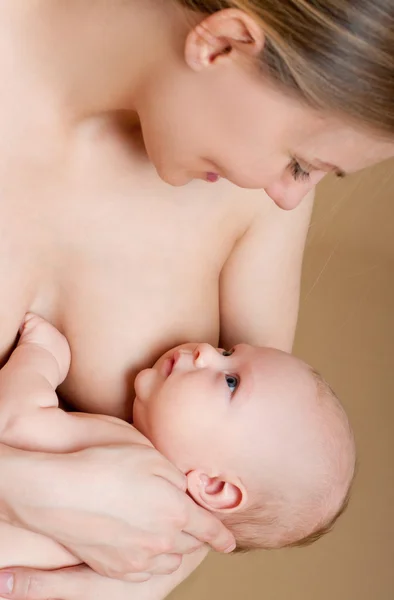 I am no longer ready to pump into a bottle after weeks in the hospital. Well, in general, it’s more comfortable for me to live when there is no milk in my breast: nothing presses, nothing swells, nothing leaks.
I am no longer ready to pump into a bottle after weeks in the hospital. Well, in general, it’s more comfortable for me to live when there is no milk in my breast: nothing presses, nothing swells, nothing leaks.
True, I also noticed the disadvantages. It seems that breastfeeding really has a better effect on the child's immunity: the son did not get sick at all in the first year, the daughter fell ill several times, once she even ended up in the hospital with bronchitis. Another point is cost. We used a can of 600 g of not the most expensive mixture in a few days, a month it turned out from 10,000 R and more. GV, of course, is much more economical.
👎 Against: breastfeeding is more physiological and cheaper0003
She breastfed both daughters. At first there were difficulties, but I struggled with them. Thanks to perseverance, she overcame all problems.
Feed each for over a year. I believe that this process is inherent in us by nature, and it is better not to interfere in the affairs of nature.